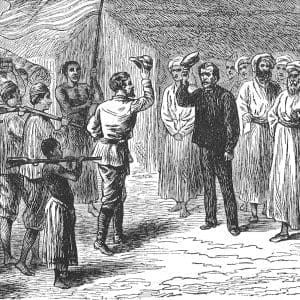Knowledge Management (KM) may sound amorphous, but here are three specific examples of real business value generated when basic KM principles are applied.
I’ve been involved in a series of projects where good ol’ Knowledge Management (KM), that buzzword from the 90’s, is wandering its way back into our conscious thought.
- Did scope creep blow the project schedule? No, it was the death-march through the Requirements Phase
Since we’re automating processes that were never documented, we have to capture and document the Business Rules before we can simplify and automate them. As some organizations still adhere to a Waterfall methodology, their teams will always be “late”, since the schedule estimates failed to consider the depth and subtlety of the current process (and they simply must have 98% of the Requirements before they can do any Design … hmmmm …)
- Haven’t we had this conversation before?
10 minutes into a meeting, after I had exhorted the group to think “out of the box” about how the Stunning Application Architecture System could be used to generate business returns … and someone pointed out that the team had held a meeting on this very topic, four years ago. “We should find the minutes of that meeting” … boy, that really took the wind out of my meeting facilitation sails.
- You say “implement a sustainable process”, I hear “create a PowerPoint and eMail it to everyone”
I’m always interested in the PowerPoint KM phenomenon, where a 10 slide seems preferable to a two-page white paper, and my Exchange server groans under the weight of multiple copies of the same screen-print filled deck that has been Fw:’d and Re:’d to each recipient 12 times. Look at all the resources wasted – especially time, which you can never recover, and attention, which is difficult to get in the first place … which leads us to …
Significant Realization #1: Eliminating Rework is a Meaningful Business Objective
Collaboration / Knowledge Management-type projects are often stymied by a business case that is all soft benefits (“If I can just increase ‘productivity’ by 2% for every employee, we’ll save $100M!” … the Law of Large Numbers again …
However, if I can eliminate 10 meetings a year, each two hours long with five attendees, meeting to create and review and agree on something that we already discussed a few years ago – well, there’s some real savings that I can get anybody to agree with!
Significant Realization #2: Search is KM’s Killer App
If you can find it, you don’t have to re-do the work. If you can make it easy to find, you will get credit for sharing the knowledge, (and/or) you won’t be bugged again, (and/or) you can add incremental improvements and see real benefits quickly.
Now, in most companies, you should fight the temptation to delay the million-dollar Enterprise Search implementation until you’ve designed a new taxonomy, fresh set of document templates, a collaboration environment to facilitate fancy electronic conversations, and a content management system to push things seamlessly around your intranet.
On the contrary – throw together an IIS server, turn on the Indexing service, and build a quicky Search page. You are probably sitting on years of interesting content – in old shared folders and peoples’ hard drives – that just needs a basic front end and a reasonable search engine to liberate it.
Everyone understands Internet search. Once they start getting result sets with their own .PPT, .XLS, .DOC, .PDF, even .VSD and .MPP files, the lights will go on. (Hint: Use that CSS to make the result set look like Everyone’s Favorite Search Engine. The additional visual clues will register in the subconscious; in this case, familiarity breeds contentment)
Significant Realization #3: Real Power comes from Creating Content
Unfortunately, sooner or later you will run out of existing content, and someone is going to have to actually capture something that’s never been written down before. The challenge is that in this time-starved world, it’s always easier to edit than it is to create; most people will hem and haw over their New Document window … but give them something to edit, and they happy to sling the (virtual) blue pencil and go into tremendous detail about How Things Really Work. I think it’s because they are pointing out your ignorance instead of demonstrating their own.
But of course, as noted before, most folks don’t like to create content. If this is you – let go of your angst, because there’s a version of first mover advantage at work here. Whenever possible, you want to take the opportunity to have “first say” in a design / process / idea.
I’m not talking about talking the loudest in a meeting – I mean being the first to create a “deliverable”. It really doesn’t matter that much what people say in meetings; the stridency kinda fizzles after a while. Be the one who captures and tightens up all of those good ideas .. you will be in excellent position to subtly focus the discussion where you want it to go. You will be the one to move the project forward, kills procrastination and driving to the benefits (and the business really loves that stuff).
Aggressively work to share knowledge, to help others gather it in, add to it, fine tune it, and push it out to the whole organization – it pays you back with an effective organization and a nice reputation.
5 November, 2006






Comments (0)